Comments / Questions (44)
![]() Liesbeth Argiolu wrote:
Liesbeth Argiolu wrote:
Wat een mooi patroon maar..... het patroon van het mouwdeel is niet symmetrisch. Zou geen probleem zijn maar dan zou het mooi zijn als de tweede mouw in spiegelbeeld wordt gebreid. Ik heb het te laat gezien, jammer want nou is het aanzicht vd mouw asymmetrisch tov de andere mouw. Paroon hierop aanpassen zou zoveel mooier zin. Vriendelijke groeten. Liesbeth
17.02.2025 - 09:56
![]() Katharina wrote:
Katharina wrote:
Liebes Drops Team, vielen Dank für Ihren unermüdlichen Einsatz. Ich bin trotzdem noch verwirrt. :) Nach drei Raglanabnahmen und damit auch zum Start der vierten Abnahmerunde sind 87 Maschen zwischen den Markierern. Im Anleitungstext wird jedoch darauf hingewiesen, dass es 85 Maschen sein sollten und die Raglanabnahmen Teil von A.5 sind. Beim Nachstricken hatte ich am Ende des Musters zwei Maschen übrig. Liebe Grüße!
18.08.2024 - 14:07
![]() Katharina wrote:
Katharina wrote:
Liebes Drops Team, im Juli 2017 bemerkte Ulrike Ihde einen Fehler in der Anleitung, über den ich nun auch gestolpert bin. Das Muster für Vorder- und Rückenteil sollte erst mit der 5. Rd der Raglanabnahmen (für Gr. L) starten.
14.08.2024 - 15:53DROPS Design answered:
Liebe Katharina, es sind 93 Maschen zwischen den Markierungsfäden und es wurde schon 3 Mal 2 Maschen abgenommen = 87 Maschen zwischen den Markierungsfäden, bei der 4. Abnahmensrunde sind es nur noch 85 Maschen für das Muster zu stricken da 1 Masche am Anfang + am Ende Rücken- + Vorderteil abgenommen wird. Viel Spaß beim Stricken!
16.08.2024 - 08:49
![]() Sussi Beck wrote:
Sussi Beck wrote:
Skal der ikke være samme antal masker mellem hulmønster i A.4A/A.4B. Strik A.4A to gange, det giver 10 ribmasker mellem hulmønster, strik A.5B det giver 6 ribmasker?
27.06.2024 - 13:44DROPS Design answered:
Hej Sussi, vi forstår hvad du mener. Vi skal høre med design hvordan man får mønster A.4 symmetrisk på ærmerne. Hold øje her på siden :)
27.06.2024 - 14:52
![]() Ilona Andreas wrote:
Ilona Andreas wrote:
Guten Tag, ich habe Fragen zur Strickschrift. Was bedeuten die Schrägstriche bei den Zunahmen in den Mustersätzen A3, A5a bis A5c? Rumpfteil: Gleichzeitig bei diesen Machen -29- verteilt abnehmen. Heißt das , dass jede 29 M abgenommen wird oder das in der Runde insgesamt 29 Ma abgenommen werden. Vielen Dank für die Hilfe. Mit freundlichen Grüßen Ilona Andreas
14.06.2024 - 08:09DROPS Design answered:
Liebe Ilona, diese Symbole finden Sie bei der Beschreibung vom Diagram siehe 4. Symbol (= 2 M rechts zusammen) und 5. Symbol (= 1 M wie zum Rechtsstricken abheben, 1 M re, die abgehobene M überziehen). Diese 29 Maschen nehmen Sie regelmäßig verteilt über die 130 Maschen die glatt gestrickt sind - so werden Sie 2 x M 29 M abnehmen, dh 269-29-29=240 Maschen übrig. Viel Spaß beim Stricken!
14.06.2024 - 16:08
![]() Annie Pang wrote:
Annie Pang wrote:
RAGLAN After raglan dec stitches in A.4A & A.4B become less. Next row do i knit knit upon knit and purl upon purl ?
20.09.2021 - 03:58DROPS Design answered:
Dear Mrs Pang, continue working the stiches in A.4 as before, ie K over K and P over P - do not work the lace pattern over 3 sts if you don't have these 3 sts "available" towards raglan, then just knit these sts instead. Happy knitting!
20.09.2021 - 11:20
![]() Maryline wrote:
Maryline wrote:
Bonsoir J'ai terminé le top. En diminuant à tous les tours,j'ai obtenu en fin d'ouvrage les 128 mailles. Par contre il faut commencer l'empiecement en même temps que le raglan pas au 7eme rang sinon le motif est trop haut.
03.08.2020 - 22:45
![]() Maryline wrote:
Maryline wrote:
J'ai pris la taille L. Je n'ai pas diminué ni augmenté au debut de l'ouvrage,il est droit. Mais l'explication dit "rabattre les 128 m restantes"C'est énorme, il y a peut etre une erreur.J'ai bien les 24 diminutions tout le 2 tours Il faut peut etre diminuer tous les tours En conclusion,les explications ne sont pas très claires, il faut être expérimentée
30.07.2020 - 13:28DROPS Design answered:
Bonjour Maryline, en L vous tricotez l'empiècement sur 320 m, et diminuez pour le raglan 8 mailles tous les 2 tours un total de 24 fois soit 24x8= 192 diminutions; il reste donc 320-192 = 128 mailles quand toutes les diminutions du raglan sont terminées. Avez-vous bien la bonne tension en hauteur, soit 32 rangs jersey = 10 cm? Cela peut faire la différence pour le raglan. Bon tricot!
04.08.2020 - 09:53
![]() Maryline wrote:
Maryline wrote:
Bonjour J'adore ce modèle J'ai terminé mais l'encolure ne correspond pas au modèle Il me reste 108 mailles à rabattre et l'encolure reste trop grande Je ne peux pas vous laisser de photo Merci
30.07.2020 - 11:26DROPS Design answered:
Bonjour Maryline, dans ce modèle, on n'a pas de réhausse pour l'encolure dos, l'encolure dos et devant seront toutes deux identiques - en revanche, les 108 m ne correspondent effectivement à aucune taille, laquelle tricotez-vous? Jusqu'à quel niveau aviez-vous le bon nombre de mailles? Avez-vous vérifié les diminutions du raglan?
30.07.2020 - 12:37
![]() Catherine wrote:
Catherine wrote:
Ok merci cette partie est faite, j'ai une autre question....j'ai rabattu les 10 mailles de chaque côté, mais le rang suivant je dois tricoterr les 87 premières mailles...est ce que je dois couper le fils ?? Sinon ça fait un trou... idem pour les 87 autres mailles. merci de votre aide
26.03.2020 - 17:37DROPS Design answered:
Bonjour Catherine, tout à fait, vous coupez le fil puis tricotez les 87 m du dos, montez les mailles de la manche, tricotez les mailles du devant, montez les mailles de la 2ème manche et joignez en rond pour tricoter maintenant l'empiècement - mettez bien les marqueurs. Bon tricot!
27.03.2020 - 09:40
Daylight#daylighttop |
|||||||||||||||||||
|
|
|||||||||||||||||||
Knitted DROPS top with lace pattern and raglan in ”BabyAlpaca Silk”. Size S-XXXL
DROPS 152-13 |
|||||||||||||||||||
|
PATTERN: See diagrams A.1 to A.5. The diagrams show all rows in pattern seen from RS. GARTER ST (in the round on circular needle): * K 1 round and P 1 round *, repeat from *-*. 1 ridge = 2 rounds. DECREASE TIP 1: Dec in each side of body, i.e. outside A.3 in each side. Dec as follows after A.3: Slip 1 st as if to K, K 1, psso. Dec as follows before A.3: Beg 2 sts before A.3 and K 2 tog. INCREASE TIP: Inc 1 st by making 1 YO. On next round K YO twisted to avoid holes. DECREASE TIP 2 (applies to raglan): Beg 3 sts before marker: K 2 tog, K 2 (marker is between these 2 sts), slip 1 st as if to K, K 1, psso. ---------------------------------------------------------- TOP: Worked in the round on circular needle from bottom up. BODY: Cast on 226-250-274-298-330-354 sts on circular needle size 2.5 mm / US 1.5 with Baby Alpaca Silk. K 1 round. Then work next round as follows: A.1 (= 19 sts), A.2A over the next 92-104-116-128-144-156 sts, A.2B (= 2 sts), A.1 (= 19 sts), A.2A over the next 92-104-116-128-144-156 sts and finish with A.2B (= 2 sts). Continue pattern like this until A.1/A.2 has been worked 1 time vertically, piece measures approx. 2 cm / ¾". Switch to circular needle size 3 mm / US 2.5, work next round as follows: A.3 (= 19 sts – work A.3 directly above A.1), work in stockinette st over the next 94-106-118-130-146-158 sts AT THE SAME TIME dec 23-23-27-29-33-33 sts evenly over these sts, work A.3 (= 19 sts – NOTE: work A.3 directly above A.1) and work the last 94-106-118-130-146-158 sts AT THE SAME TIME dec 23-23-27-29-33-33 sts evenly over these sts = 180-204-220-240-264-288 sts on needle. Continue in the round in stockinette st and A.3 in each side. REMEMBER THE GAUGE! When piece measures 6 cm / 2⅜", dec 1 st on each side of A.3 in each side on every 6th-6th-6th-6th-7th-7th round 7-7-7-7-6-6 times in total – READ DECREASE TIP = 152-176-192-212-240-264 sts. When piece measures 22-22-23-23-24-24 cm / 8¾"-8¾"-9"-9"-9½"-9½", inc 1 st on each side of A.3 in each side on every 8th-8th-8th-8th-10th-10th round 7-7-7-7-6-6 times in total – READ INCREASE TIP = 180-204-220-240-264-288 sts. When piece measures 38-39-40-40-41-42 cm / 15"-15¼"-15¾"-15¾"-16"-16½", work in garter st - see GARTER ST above - over 15 sts in each side (i.e. over the middle 15 sts in A.3 in each side) AT THE SAME TIME on 1st round dec 5 sts evenly in each side over these 15 sts, the remaining sts are worked in stockinette st as before. When 3 rounds in garter st have been worked over the 10 sts in each side, bind off 10 sts for armholes = 75-87-95-105-117-129 sts remain on each front and back piece. Piece measures approx. 39-40-41-41-42-43 cm / 15¼"-15¾"-16"-16"-16½"-17". YOKE: Work next round as follows: Work in stockinette st over the first 75-87-95-105-117-129 sts (= back piece), AT THE SAME TIME insert 1st marker after first st and 2nd marker before last st, then cast on 57-57-65-65-73-73 new sts on needle over armhole, work in stockinette st over the next 75-87-95-105-117-129 sts (= front piece), AT THE SAME TIME insert 3rd marker after the first of these sts and 4th marker before the last of these, then cast on 57-57-65-65-73-73 new sts on needle over the other armhole = 264-288-320-340-380-404 sts on needle. READ ALL OF THE FOLLOWING SECTION BEFORE CONTINUING! Work first round as follows: K over back piece (i.e. until 1 st past 2nd marker), work as follows over sleeve: * P 2, K 2 *, repeat from *-* 2-2-3-3-4-4 times in total, P 2, work A.4A (= 13 sts) 2 times in total, work A.4B (= 11 sts), * P 2, K 2 *, repeat from *-* 2-2-3-3-4-4 times in total, P 2, K over front piece (i.e. from 1 st before 3rd marker and until 1 st past 4th marker) and work over sleeve as on first sleeve (NOTE: 1 st on each side of all markers are worked in stockinette st until finished measurements). RAGLAN: On next round beg dec for raglan and dec for raglan on each side of the 4 markers – READ DECREASE TIP 2 (= 8 sts dec). Repeat dec every other round 21-22-24-25-26-26 times in total. PATTERN: AT THE SAME TIME on 1st-1st-4th-3rd-3rd-3rd round with raglan dec (i.e. on 1st-1st-7th-5th-5th-5th round worked when raglan dec beg) work pattern according to diagram A.5 on front and back piece (work the other sts as explained above). NOTE: When pattern beg, there should be 73-85-85-97-109-121 sts between markers on front and back piece. Work as follows on front and back piece: K 1 st after first marker, work diagram A.5A (= 23 sts, raglan dec is marked in diagram), work pattern according to diagram A.5B over the next 24-36-36-48-60-72 sts, A.5C (= 24 sts, raglan dec is marked in diagram) and finish with K 1 before marker (continue as before over sts on sleeve with raglan dec as explained above). Continue pattern like this. When A.5 has been worked 1 time vertically, work 0-2-0-2-4-4 rounds in stockinette st over front and back piece and pattern as before over sleeves AT THE SAME TIME continue raglan dec in size M + XL + XXL + XXXL. After all dec for raglan 96-112-128-140-172-196 sts remain on needle. NECK EDGE: Switch to circular needle size 2.5 mm / US 1.5 and P 1 round, K 1 round and P 1 round, before loosely binding off with K sts. |
|||||||||||||||||||
Diagram explanations |
|||||||||||||||||||
|
|||||||||||||||||||
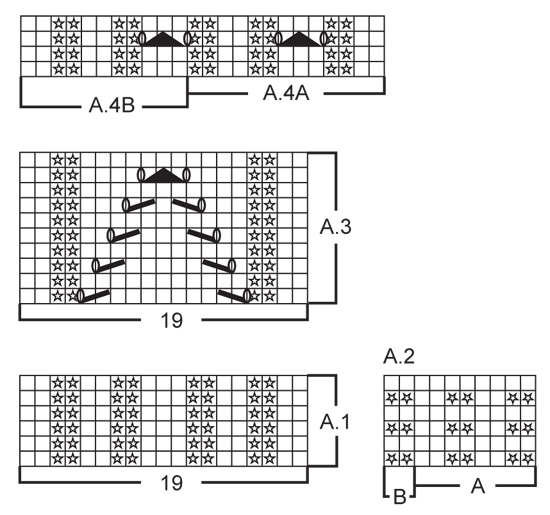 |
|||||||||||||||||||
 |
|||||||||||||||||||
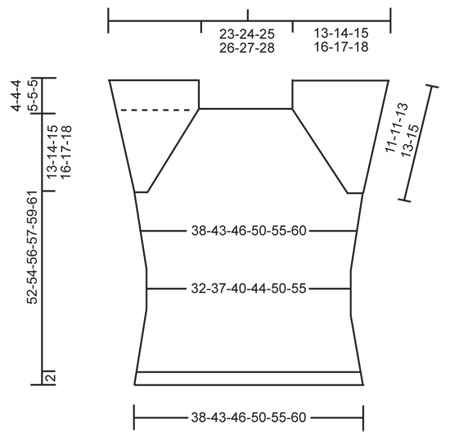 |
|||||||||||||||||||
Have you finished this pattern?Tag your pictures with #dropspattern #daylighttop or submit them to the #dropsfan gallery. Do you need help with this pattern?You'll find 17 tutorial videos, a Comments/Questions area and more by visiting the pattern on garnstudio.com. © 1982-2026 DROPS Design A/S. We reserve all rights. This document, including all its sub-sections, has copyrights. Read more about what you can do with our patterns at the bottom of each pattern on our site. |
|||||||||||||||||||












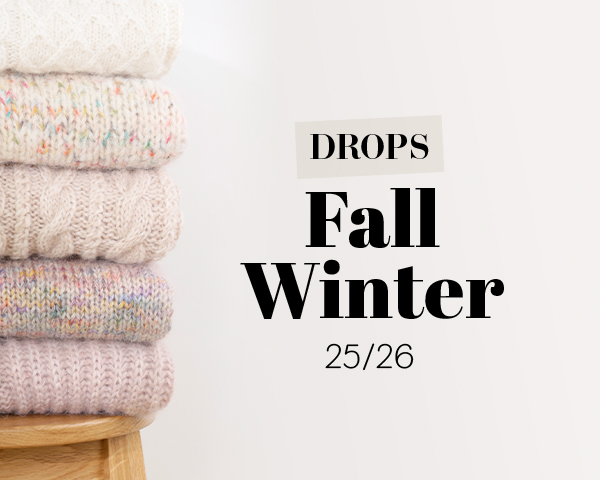




































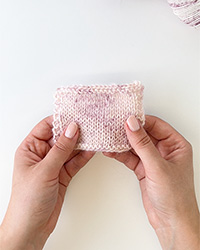
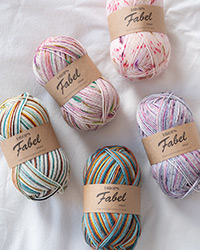
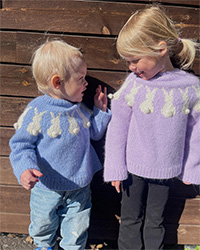
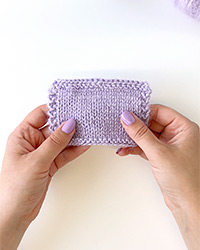
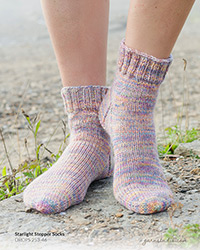
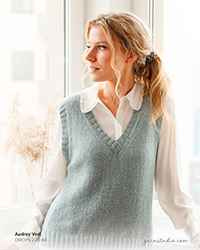
Post a comment to pattern DROPS 152-13
We would love to hear what you have to say about this pattern!
If you want to leave a question, please make sure you select the correct category in the form below, to speed up the answering process. Required fields are marked *.